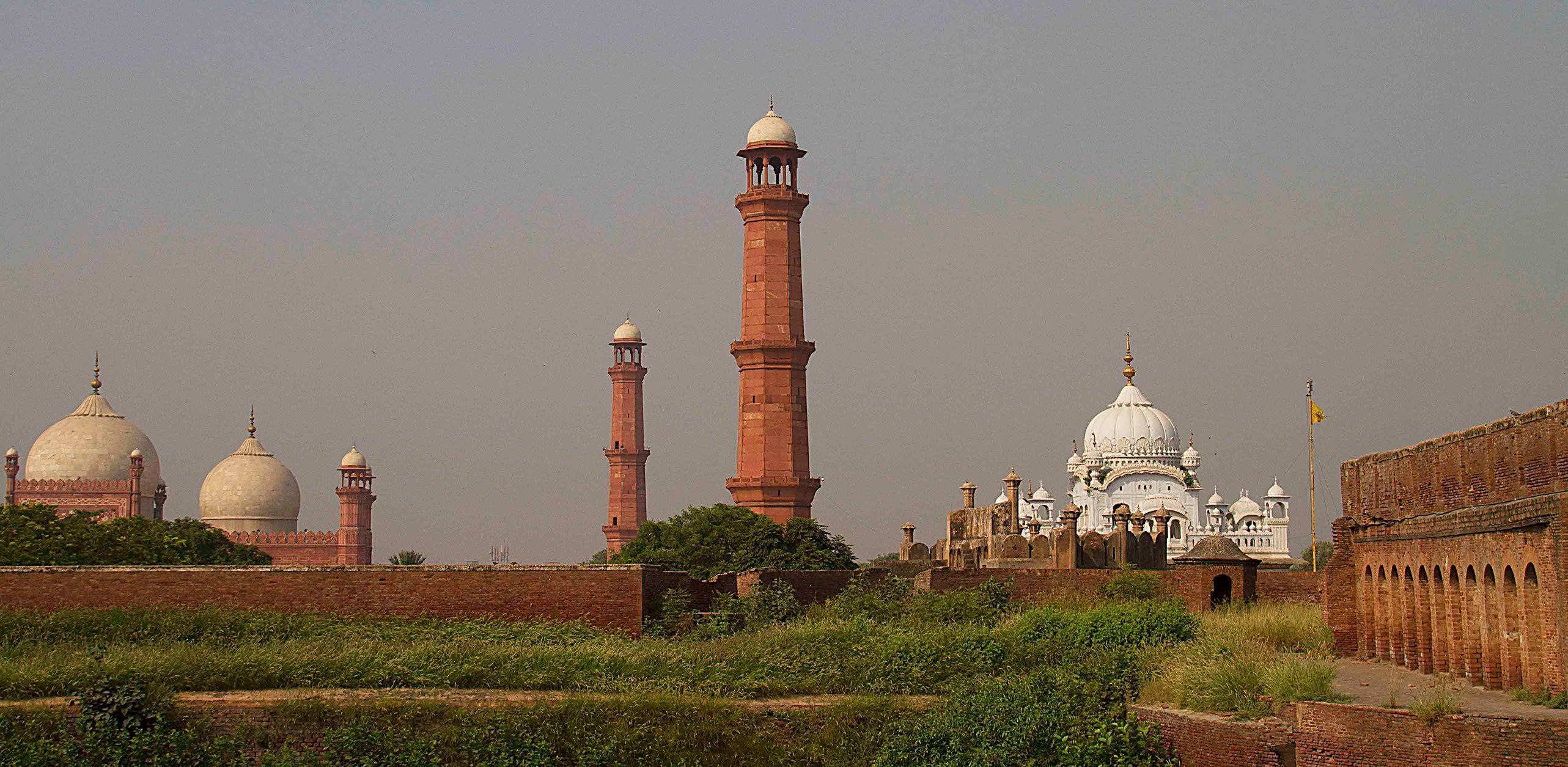From the grounds inside the Lahore Fort, as I looked at the domes of Badshahi Mosque (left) and the Ranjit Singh Memorial (right), the similarities were striking. In addition, the minarets of the Badshahi Mosque reminded me of the Bungas (minarets) around the Golden Temple in Amritsar. In these architectural similarities, I was reminded of the commonalities!
Once Ranjit Singh, the lion of Punjab had walked on these grounds of Lahore Fort. His leadership had inspired a spirit of oneness among Punjabis, making them rise beyond their religious beliefs. For the first time, his Hindu and Sikh troops defeated the co-religionist chiefs of Punjab, while his Muslim troops did not pay heed to the appeals from Muslim Afghans to crusade against Ranjit Singh. The lion of Punjab created a mighty pluralistic kingdom, which for the first time in 1000 years was ruled by a son of the soil.
But today, Punjab stands divided by faith and the Punjabis have been conditioned to only justify the divide and not accept the similarities.
From the Lahore Fort, as I entered the Badshahi Mosque, I was saddened to see the blatant lie on a signboard which read, “During the Sikh period, the mosque was desecrated.”
A mosque is desecrated only when its Mehrab is broken and there is no evidence that it was ever destroyed during Ranjit Singh’s rule. On the other hand, Fakir Syed Saifuddin, Director of the Fakir Khana Museum in Lahore, a descendant of Fakir Azizuddin, the Foreign Affairs minister of Ranjit Singh, has an official scroll that lists over 1500 mosques and dargahs, including the Badshahi Mosque which received grants from Ranjit Singh.
A guide who took me around the mosque said, “Ranjit Singh had the minarets of Badshahi Mosque knocked down.” However, in a lithograph created by Charles Stewart Hardinge during the Sikh era in 1845, the minarets can be seen standing in splendour!
It is pertinent to ask, if Ranjit Singh had disrespected the Muslim sentiments, would the many senior Muslim ministers in his cabinet and nearly 50% of the army comprising of Muslim soldiers continue to serve him loyally? The reality is that the vacuum created after the partition of 1947 has unleashed self-styled historians with a myopic objective to only divide and not harness the similarities.
In my book “LOST HERITAGE The Sikh legacy in Pakistan”, I have provided comprehensive explanations that refute many of these blatant lies. Including the common lie that the Badshahi Mosque was used as a stable. A careful read in my book of William Moorcroft’s text from his travelogue of 1819 will clarify where he saw the horses and 200 years later, where the imaginations have taken them!
Photographed in Oct 2014, during the research for the book “LOST HERITAGE The Sikh Legacy in Pakistan”

